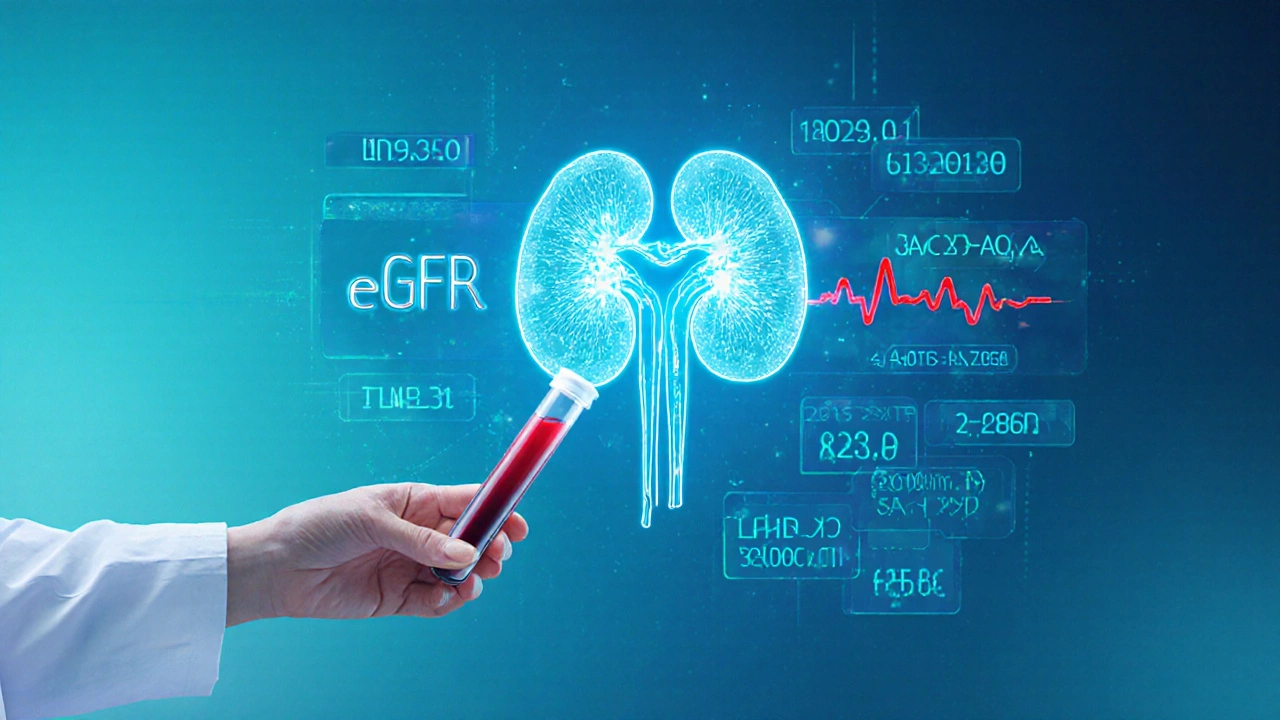Metformin Safety Calculator: Kidney Function Check
Metformin Safety Calculator
This tool calculates if your kidney function is within the safe range for long-term metformin use. The FDA recommends maintaining eGFR above 45 mL/min/1.73m² for continued metformin therapy.
Quick Takeaways
- Metformin is approved for lifelong use in most people with type2 diabetes.
- Regular kidney‑function checks are the key safety step for long‑term therapy.
- Rare complications like lactic acidosis are mainly linked to poor renal health or acute illness.
- Doctors may pause or switch metformin for pregnancy, major surgery, or when other drugs become more appropriate.
- Staying on metformin can also lower cardiovascular risk and support modest weight loss.
What Is Metformin?
When you first hear the name Metformin is a biguanide oral medication that lowers blood glucose by decreasing liver production of glucose and improving insulin sensitivity in muscle cells. It was introduced in the 1950s and became the first‑line drug for type2 diabetes after the 1990s when the FDA approved it for long‑term use.
Because it works without causing low blood sugar (hypoglycemia) for most patients, metformin has become the go‑to choice for doctors worldwide.
Recommended Duration and Why It Matters
The simple answer: most people stay on metformin indefinitely. Clinical guidelines from the American Diabetes Association (ADA) and the European Association for the Study of Diabetes (EASD) both list metformin as a lifelong therapy unless something changes.
Why “indefinitely”? Studies that followed patients for 10‑15years show that continued metformin use keeps HbA1c (average blood sugar) lower than stopping it, and it also reduces the risk of heart attacks and strokes. In other words, the longer you stay on it-provided you’re monitored-the more you protect your heart and kidneys.

Safety Profile for Long‑Term Use
Long‑term therapy is safe for the vast majority, but there are three safety checkpoints you’ll hear doctors mention over and over.
1. Kidney Function Monitoring
Metformin is cleared by the kidneys. The FDA recommends checking serum creatinine or estimated glomerular filtration rate (eGFR) at least once a year. If eGFR stays above 45mL/min/1.73m², the drug is considered safe. Below that, dose reductions or a switch to another medication may be needed.
2. Lactic Acidosis Risk
Rare but serious, lactic acidosis occurs when lactate builds up faster than the body can clear it. The absolute risk is about 3-9 cases per 100,000 patient‑years, mainly in people with severe kidney impairment, liver disease, or acute heart failure. The condition is so uncommon that the benefit‑risk ratio still favors staying on metformin for most patients.
3. Cardiovascular Benefits
Beyond glucose control, metformin has modest but real effects on blood vessels. A landmark UKPDS (United Kingdom Prospective Diabetes Study) showed a 39% reduction in myocardial infarction risk for patients on metformin compared with diet alone. This cardiovascular edge is part of why guidelines encourage lifelong use.
When Doctors May Stop or Switch Metformin
Even a drug as safe as metformin has moments when pausing makes sense.
- Pregnancy: Metformin is sometimes continued in gestational diabetes, but many obstetricians prefer insulin for tighter control.
- Contrast Imaging: Iodinated contrast agents can briefly worsen kidney function. Guidelines advise holding metformin for 48hours after the study and restarting only if kidney tests are normal.
- Acute Illness: Severe infection, dehydration, or heart failure can drop eGFR quickly. Doctors often tell patients to stop metformin temporarily until labs normalize.
- Progressive Disease: If HbA1c rises despite the maximum tolerated dose, adding GLP‑1 agonists, SGLT2 inhibitors, or insulin might be necessary, but metformin usually stays as background therapy.

Comparing Metformin With Other Diabetes Meds
| Attribute | Metformin (Biguanide) | Sulfonylureas | Insulin |
|---|---|---|---|
| Primary Mechanism | Reduces hepatic glucose production; improves peripheral insulin sensitivity | Stimulates pancreatic beta‑cells to release more insulin | Provides exogenous insulin to replace or supplement endogenous production |
| Typical Duration of Therapy | Indefinite (lifelong for most) | Usually years, but risk of secondary failure increases after 3‑5years | Indefinite, dosage adjusted continuously |
| Major Side Effects | Gastro‑intestinal upset, vitaminB12 deficiency, rare lactic acidosis | Hypoglycemia, weight gain | Hypoglycemia, weight gain, injection site reactions |
| Renal Contra‑indication | eGFR<45mL/min/1.73m² (dose adjust below 60) | None specific, but caution with severe renal disease | None, but dose may need adjustment |
| Cardiovascular Impact | Modest risk reduction (UKPDS) | Neutral to slightly adverse | Neutral; risk depends on glucose control |
Practical Tips for Staying on Metformin Safely
Even though the drug is meant for long‑term use, a few habits can keep you on track.
- Schedule an annual blood‑work appointment that includes eGFR and B12 levels.
- Take metformin with meals to reduce stomach upset; consider the extended‑release (XR) form if GI issues persist.
- Stay hydrated, especially during hot weather or intense exercise.
- Inform your doctor before any major surgery, contrast scans, or severe infections.
- If you notice persistent nausea, diarrhea, or metallic taste, discuss dose timing adjustments or switching to XR.
- Keep a simple log of your blood‑sugar readings; consistent control reinforces the need for continued therapy.
Frequently Asked Questions
Can I take metformin forever?
For most adults with type2 diabetes, yes-provided kidney function stays stable and you have no acute illnesses that demand a temporary hold.
How often should I get my kidney tests?
At least once a year if eGFR is above 60mL/min/1.73m². If it’s between 45‑60, check every 6months; below 45 you’ll likely need a dose change or another drug.
What should I do if I develop nausea?
Try taking the dose with a larger meal, split the daily dose (e.g., morning and evening), or switch to the extended‑release version, which releases the drug more slowly.
Is it safe to combine metformin with other diabetes drugs?
Yes-combination therapy is common. Metformin pairs well with GLP‑1 agonists, SGLT2 inhibitors, or even a low dose of insulin, and the safety profile remains favorable.
Can metformin cause vitamin B12 deficiency?
Long‑term use can reduce B12 absorption in about 10‑30% of patients. Testing every 2‑3years and supplementing if low prevents anemia and neuropathy.
Bottom line: metformin is built for the long haul. Keep an eye on kidney health, watch for rare side effects, and stay in regular contact with your healthcare team. With those steps, you can reap the glucose‑lowering, weight‑controlling, and heart‑protecting benefits for years to come.
